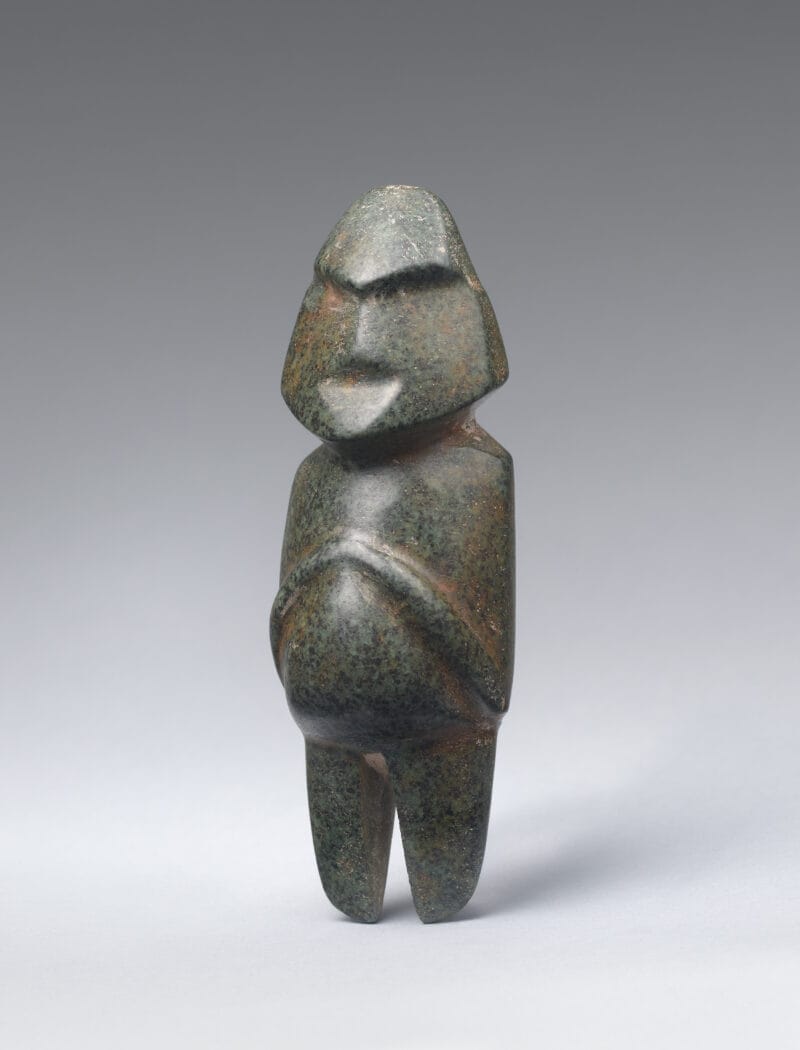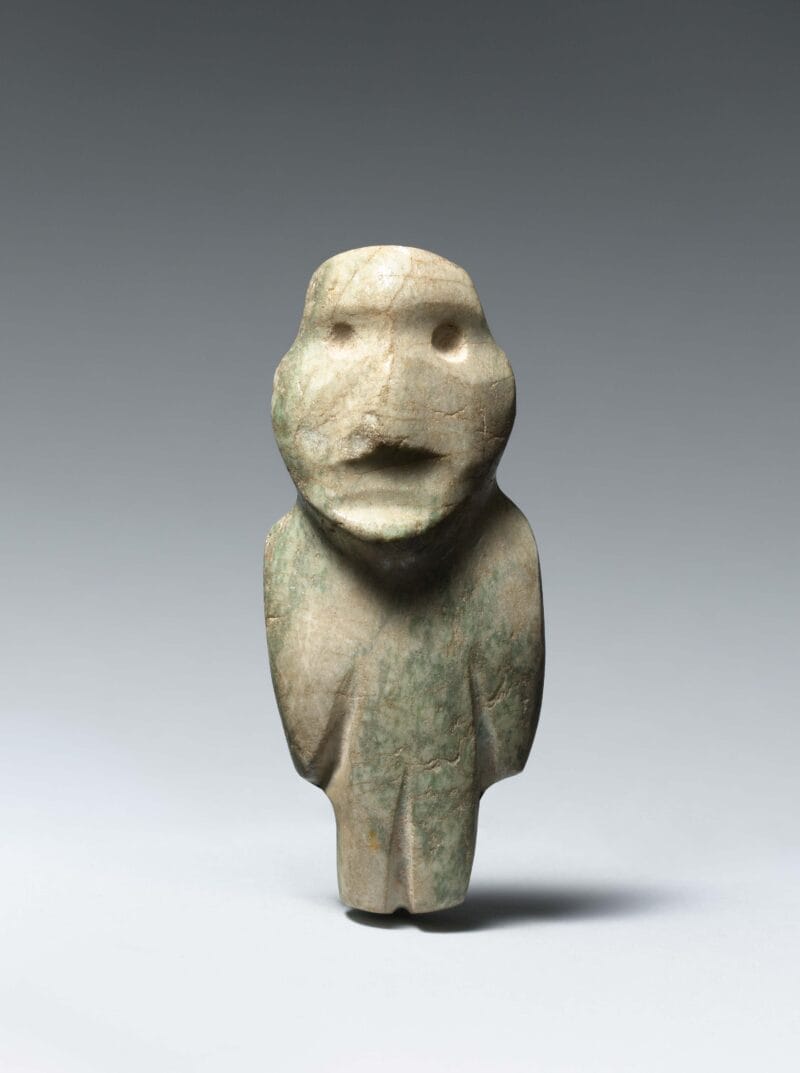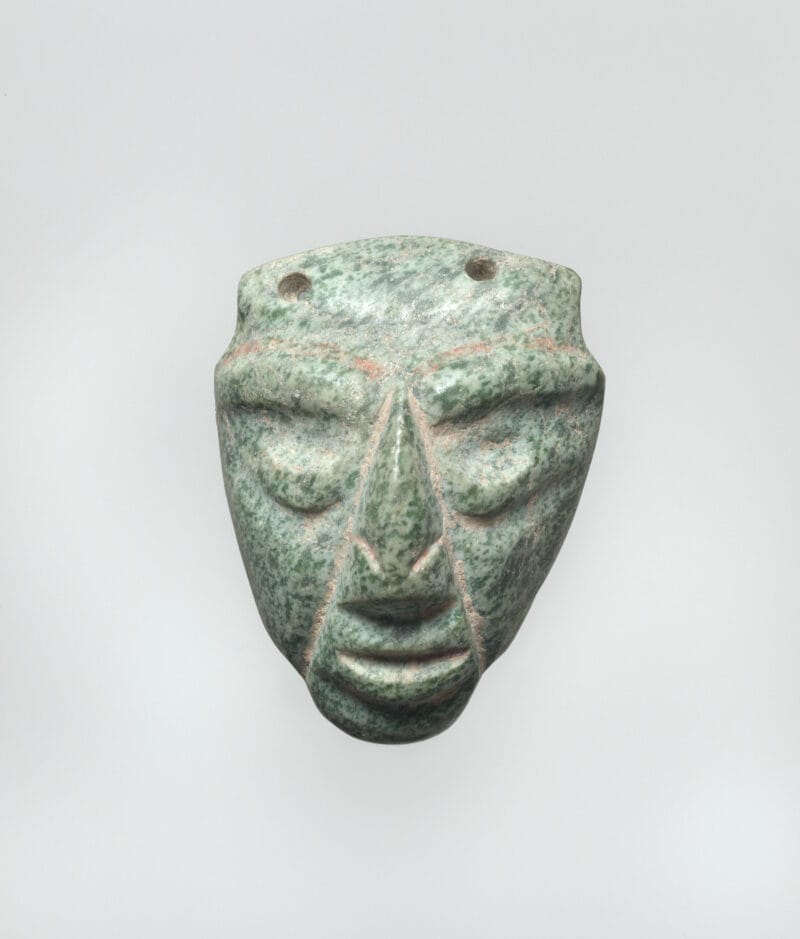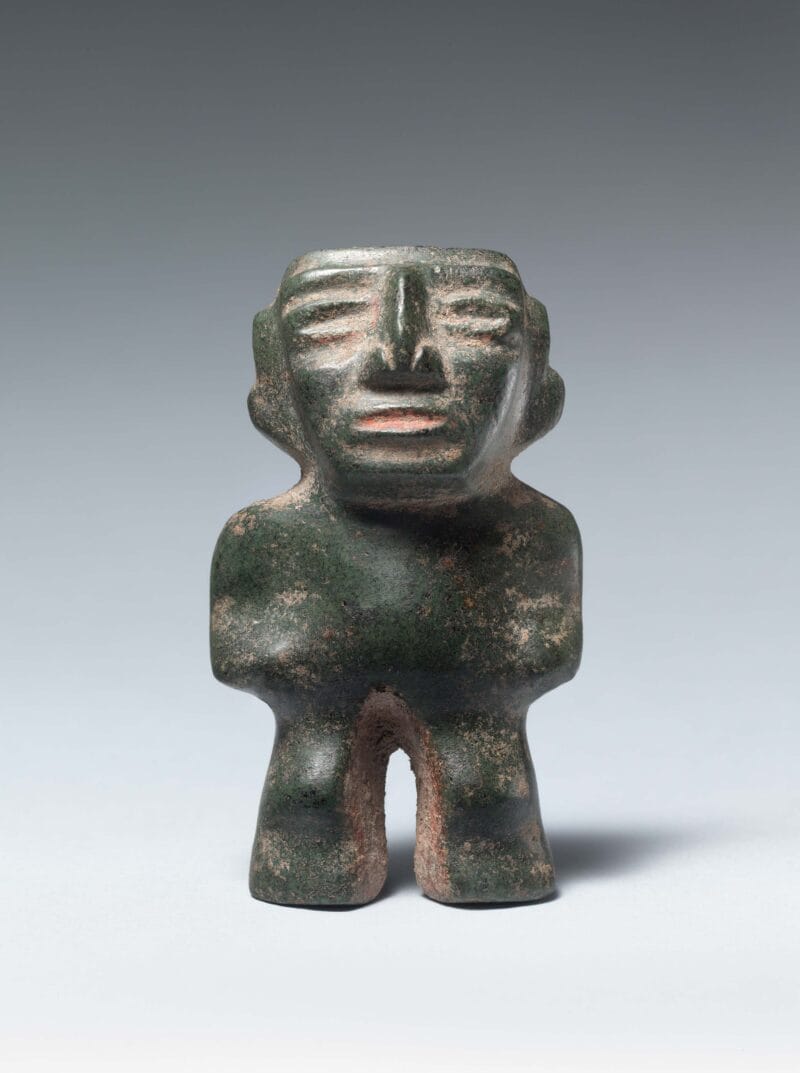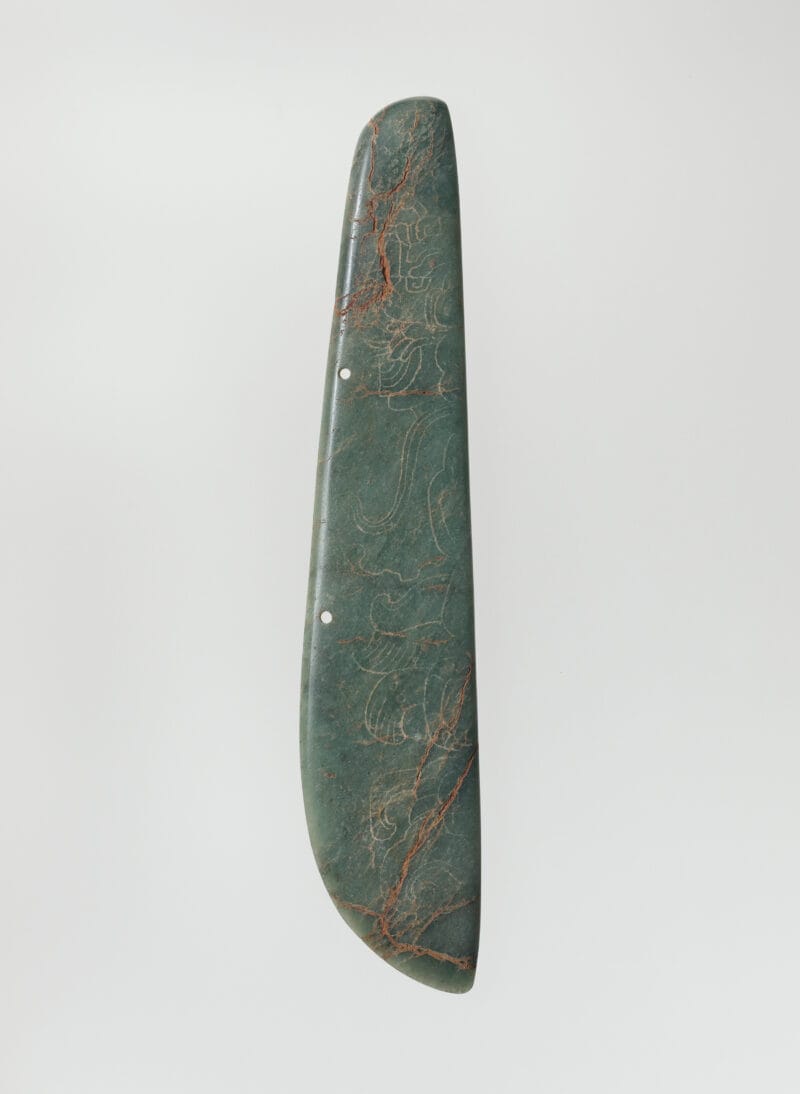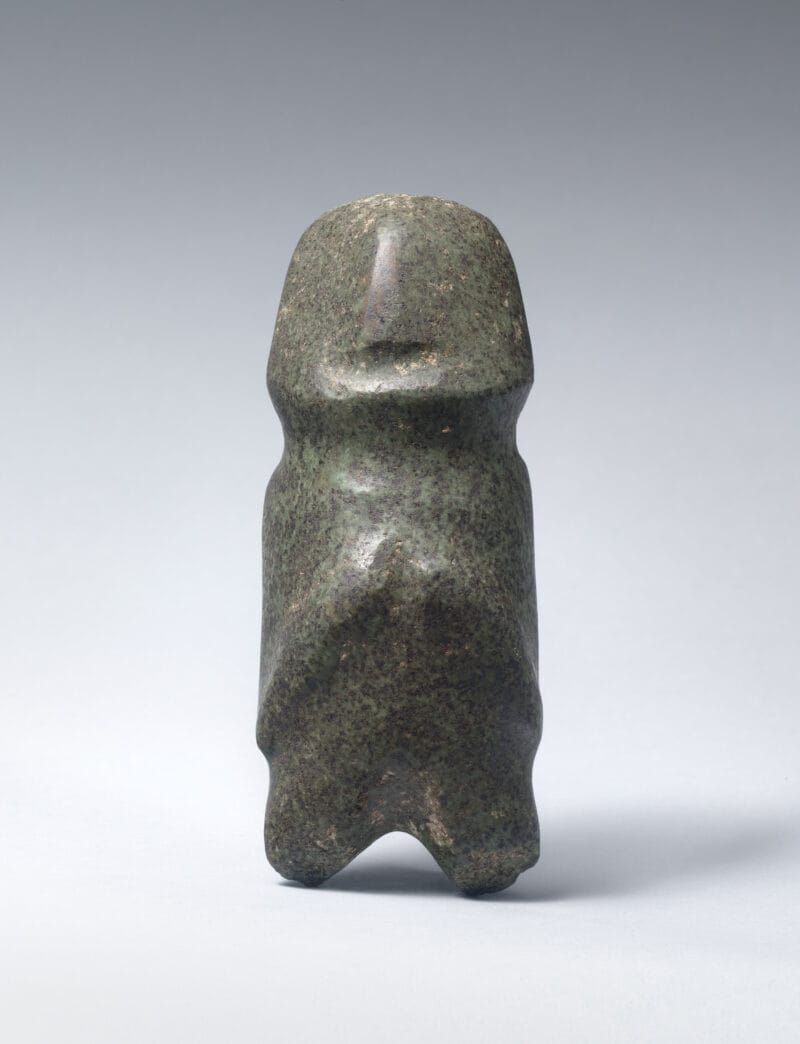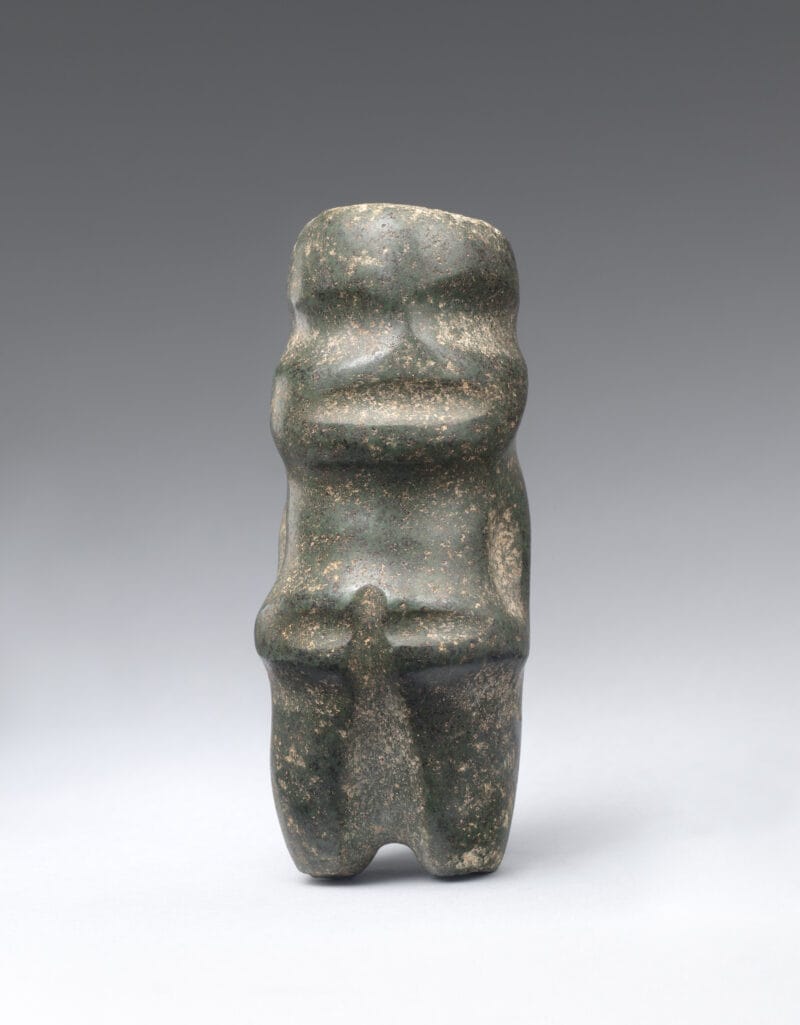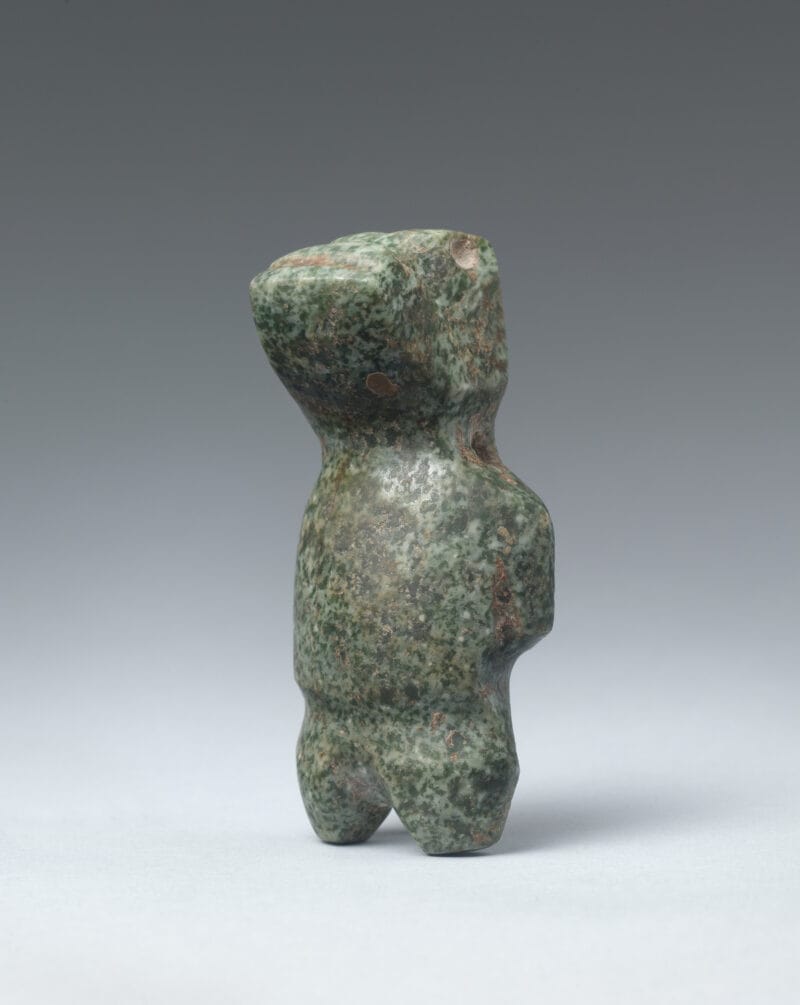
About the Object
Standing anthropomorphic figures such as this Mezcala work are often carved from unidentified mottled green stone. This work is most notable for the unique blend of human and animal features that most likely depict a caiman (alligator) or another reptile. While these animals were associated with power, water, and rebirth, the green stone used to fashion this tool was probably also linked with ideas of fertility, agriculture, rain, and the underworld because, like many Mezcala-Chontal figures, this object was likely recycled from a celt, or stone hand axe. The drill holes also indicate that it may have been worn as a necklace. While numerous figures with human features have been found, this style of Mezcala figure is quite rare as fewer anthropomorphic examples exist today.
Additional Information
While the Mezcala-Chontal tradition originating in what is now the western Mexican state of Guerrero endured for centuries, the looting of the burial shaft tomb sites where these objects have usually been found makes accurate dating and additional analysis quite difficult. However, additional archaeological research is beginning to shed light on these fascinating cultures, while the objects themselves were later excavated, esteemed, and reburied by cultures such as the Mexica (Aztecs).
[Throckmorton Fine Art, New York, NY];
Related Objects
You may also be interested in
Nari Ward: Home of the Brave
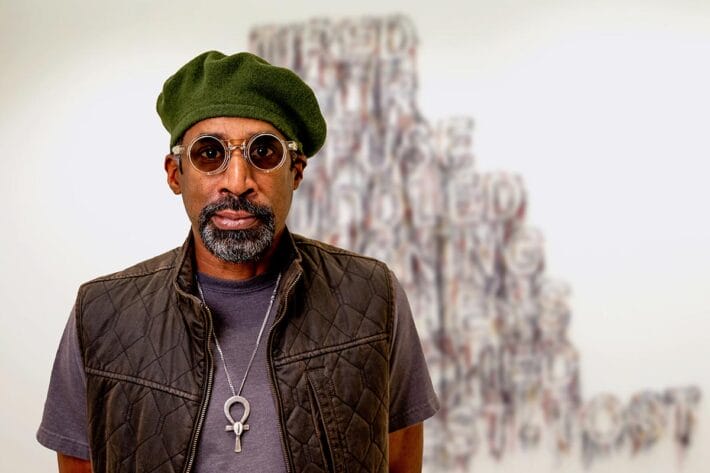
Nari Ward: Home of the Brave

Nari Ward


